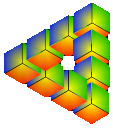The long-awaited official release of PHP4 finally hit the streets in
May, signalling a new era in server-side programming: a speedy, stable,
customizable, "all hail open source" era.
Previously we have previewed some of the popular new
features of PHP4. He didn't hit them all, though -- he couldn't have! There
are more than 400 new functions in PHP4: new database connectivity
functions, more than 20 new array functions, integrated
payment-processing functions, integrated cURL functions, and on and on.
Just when you
thought "I could use a function that does whatever," lo and behold, a
function named whatever() pops up in the manual.
Along with the new functions, the speedy engine and native session
support, there are now numerous ways to install PHP, depending on your
platform and Web server. While some methods are more stable than others,
here are some examples of how PHP is used on such non-Windows systems as:
- a static or dynamic module for Apache
- a static module for AOLServer and Roxen
- an ISAPI module for Zeus
- an NSAPI module for Netscape Enterprise Server
- a CGI binary
While on Windows (95, 98, NT, 2K) you might find PHP in use as:
- a CGI binary
- a static module for Apache
- an ISAPI module for IIS
- an NSAPI module for Netscape Enterprise Server
In this article, you can choose one of two paths: Getting Up
and Running (Windows), or Getting Up and Running
(non-Windows). Each path provides a brief explanation of the
installation possibilities, then takes you through a quick installation
using Apache as the base Web server software. The Windows path takes you
through an installation of the CGI version of PHP, and discusses the
php.ini file and how to enable functionality through extensions. The
non-Windows path focuses on utilizing the DSO (dynamic shared object)
version of PHP and how to add or delete functionality as time goes on.
You might only need to travel down one of these paths for now, but a
quick peak at the other option might be a good idea as well -- you never
know when a well-rounded knowledge base will come in handy. You may have
nothing but Windows servers now, but when your manager plops a Linux box
into your lap and says "put PHP on this," you'll be that much further along.
That said, now's the time to pick your path that most meets your current
needs and enjoy. No matter which adventure you choose, no one gets eaten by
cave monsters. Once again, here are your choices:
next page»





